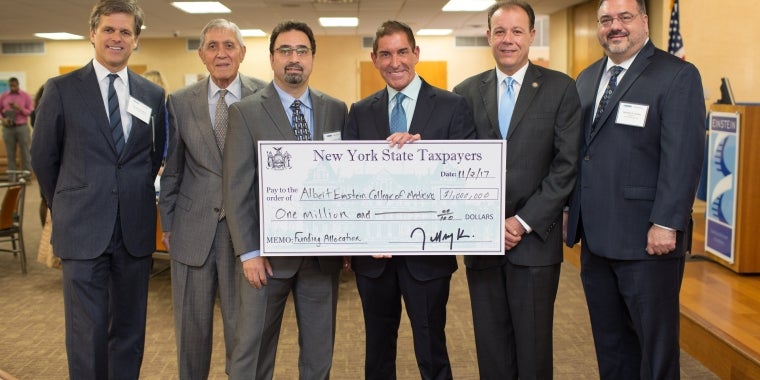
Senate Bipartisan Task Force on Hurricane Sandy Report
Jeffrey D. Klein
February 3, 2013
-
ISSUE:
- Hurricanes
- National Disasters
- Storms
Introduction:
Superstorm Sandy (“Sandy”) was a storm of unprecedented strength and destruction in New York State. Sandy made landfall in Long Island and New York City on October 29, 2012 and quickly caused severe damage to much of the downstate region. The hardest hit areas were New York City and the counties of Suffolk, Nassau, Westchester, and Rockland. In total, $32 billion is the estimated total cost to New York of response and recovery for Superstorm Sandy.
The human toll of Sandy was significant. Of the 146 deaths nationwide attributed to Superstorm Sandy, sixty of those were in New York. Sandy also destroyed or damaged 305,000 homes, temporarily displacing 40,000 in New York City alone. In Breezy Point, Queens, floodwaters caused an electrical shortage that started a fire that destroyed 126 homes and damaged 22.i
Estimates indicate the storm caused roughly $8.1 billion in damage to private housing. Three months later, the impact of Sandy is still being felt by many. Some of the homes that were not destroyed remain uninhabitable due to mold and lack of heat. As a result, thousands of families are still living in temporary housing arranged by the Federal Emergency Management Agency (FEMA), or living in homes that still require major repairs.
Sandy also had devastating impacts on businesses. It is estimated that 265,300 business were affected, resulting in approximately $6 billion in damage due to losses of revenue and repairs. As a result of the destruction to homes and businesses, local governments will soon be facing large declines in property tax values, which have negative implications for these local budgets.
Sandy also caused severe damage to utility and transportation networks. The wind and flooding caused widespread power outages in all of the affected counties. Power for 2.19 million households was out for days, weeks, and even months. Downed lines were the primary cause of the outages in Nassau, Suffolk, and Westchester counties while flooded electrical equipment was the primary cause in New York City. The high winds and flooding from the storm also forced the closure of most of the tunnels and bridges serving Manhattan and Long Island. The Metropolitan Transportation Authority (MTA) alone incurred about $5 billion in damage.
On December 10, 2012, the Senators Dean G. Skelos and Jeffrey D. Klein announced the formation of a bipartisan Task Force for Hurricane Sandy Recovery (“Task Force”).
The three major goals of the Task Force are to:
Identify areas most in need of recovery assistance; Review rebuilding and storm planning policies to ensure better storm- preparedness in the future; and Develop legislative solutions that will make New York State better prepared for a future severe weather event.
Share this Article or Press Release
Newsroom
Go to Newsroom
